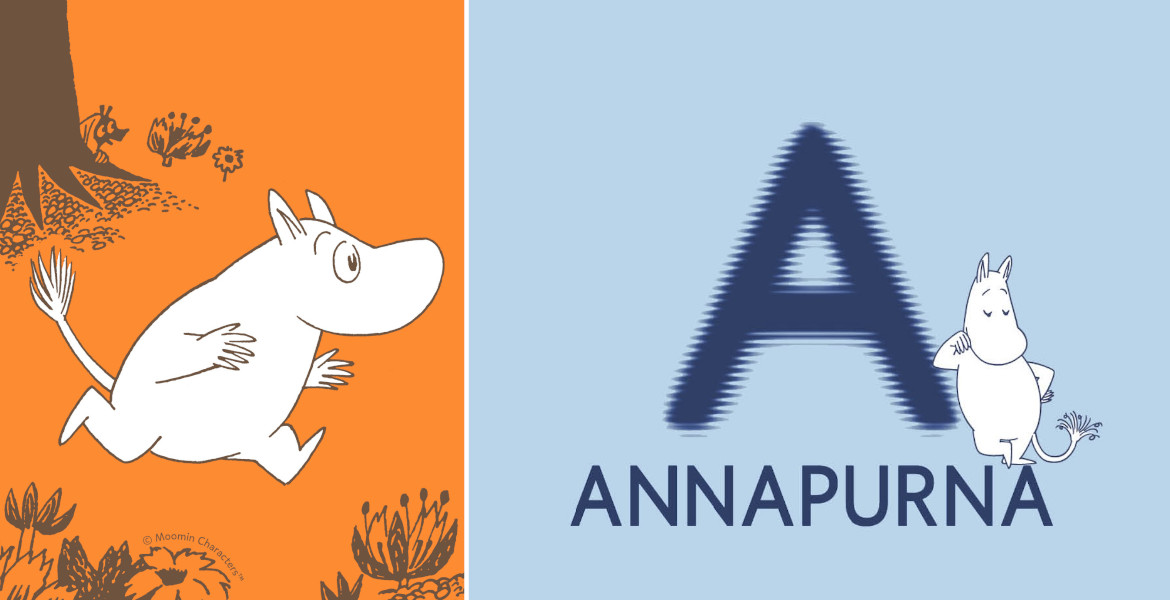–The farmstead gnome has played a prominent role in Swedish folklore as one of the most important protective spirits. His influence was so significant that people not only offered him food but also prepared a straw bed for him. A satisfied gnome would bring prosperity, known as “tomtebolycka”, to the household, while a displeased one could bring misfortune.
In Nordic folklore, the farmstead gnome is among the most well-known beings, enjoying a particularly close connection with Swedes. Tales of various supernatural entities were common, but gnomes were especially prevalent and widely believed in. The Institute for Language and Folklore (ISOF) houses over a thousand archival stories about these gnomes.
“My mother had seen a gnome. She was so sure of it. She was walking along a road when she saw a tiny man with a red cap running ahead of her. When they reached a fork in the road, he ran down the other path” recounted Adolf Johansson, born in 1883 (recorded by Ragnar Nilsson, IFGH 4786, p. 4, Institute for Language and Folklore, Gothenburg).
The word “tomte” originates from the term tomt (homestead) and was previously used in the form tomt-gubbe, later evolving into tomtegubbe, according to the cultural organization Kulturminnet. The being is also known by other names, such as gårdstomte, hustomte, tomtevätte, tomtrået, tomtenisse, or tomtebisse.

The Spirit of the Farmstead
The term bisse means leader, sage, or “top hen” (a Swedish expression for “head honcho”). In many ways, the farmstead gnome fulfilled such a role. He watched over the farm and assisted with daily chores, such as sifting flour, sweeping, haymaking, carrying straw, and tending to the animals. He was often described as the very spirit of the farm. Some stories claimed that he was the first man to cultivate the land, unable to rest in death and thus continuing to guard “his” farm.
The farmstead gnome is closely related to the vätte, a subterranean being believed to dwell beneath human houses in folklore.
Finding a horse with a braided mane in the morning was a sign that the gnome had visited the stable. Gnomes were said to love horses and braiding their manes. The horse, considered the gnome’s favorite animal, was never to be neglected, as mistreatment could have severe consequences.
A Temperamental Being
The gnome brought security to everyday life, and his satisfaction was key to the farm’s success. However, he was easily angered and intolerant of negligence. A dirty barn could earn someone a slap or a kick. It was crucial to avoid working at night on the farm, as that was the gnome’s time for labor. Disturbing him could result in a noisy reprisal the following night.
“They didn’t like it when people made noise after dark. If you did, the same noise would return later, without anything being done. I heard it myself more than once. I also saw them once”, said Ingeborg Nilsson West, born in 1836 (recorded by Olle Lindskog, IFGH 964, pp. 11–12, Institute for Language and Folklore, Gothenburg).
The gnome was considered conservative and resistant to modern agricultural machinery or significant changes. Introducing too many modern elements could prompt him to abandon the farm, an ominous sign. If angered, the gnome might kill a cow or otherwise sabotage farm work, according to ISOF records. A farm’s prosperity or hardship was often attributed to the state of its gnome.
Rewards and Rituals
Rewarding the gnome was crucial. People commonly prepared a straw bed for him in the barn and offered him tobacco, which he reportedly enjoyed. At Christmas, it was traditional to leave out a bowl of porridge, leading to the term tomtegröt. The porridge had to include butter, as one story illustrates:
“They had to give the gnome milk and porridge on Christmas Eve. There had to be butter in the porridge. At one place here, they had a gnome. They gave him porridge on Christmas Eve, but there was no butter on top. The butter was underneath, but the gnome didn’t see it. He became so furious that he went to the barn and killed their best cow”, recounted Viola Gustafsson in 1927 (IFGH 937, pp. 40–41, Institute for Language and Folklore, Gothenburg).
The gnome was often credited with magical powers, such as saving farms from famine by increasing grain yields or warning of dangers like fire or livestock illness. A satisfied and content gnome symbolized security and prosperity, embodying the concept of tomtebolycka.
A well-known legend tells of the gnome pulling a straw of hay. He huffs and puffs with effort, which prompts the farmer to mock him for struggling with such a small load. The gnome becomes angry and retorts that if he exerts as much effort back at the farmer as the farmer has mocked him, the farmer will have nothing left to boast about. In reality, the gnome had been carrying far more than the farmer realized, and after the incident, the farmer ends up impoverished.

Common in the smithy
The farmstead gnome was not confined solely to farms. There are also tales of forest gnomes, who, for example, would wake charcoal burners if their kilns began to burn during the night. A story from Axel Lind, born in 1884 and recorded by Olle Lindskog in 1927, describes how blacksmiths were particularly superstitious and believed strongly in gnomes.
“My uncle used to say that if a blacksmith tried to take coal from a bin that wasn’t his own, the gnome would immediately appear and give him a resounding slap”, reads one account in IFGH 961, pp. 5–9, Institute for Language and Folklore, Gothenburg.
The origins of belief in the farmstead gnome are unclear, but according to the Nordic Museum (Nordiska museet), it can be traced back to at least the 7th or 8th century. In written records, the gnome is mentioned by Saint Birgitta, who in the 14th century criticized the custom of offering porridge to the gnome, considering it ungodly. The Swedish priest Olaus Magnus also references gnomes in his book History of the Nordic Peoples, where he includes illustrations of them.
Invisible to most
The farmstead gnome is a being that typically remains invisible but is sometimes said to reveal itself to certain individuals. Those who were synsk or clairvoyant might catch a glimpse of the gnome, but it was crucial to show him respect. Generally, people knew a gnome was present on the farm not by seeing him, but by noticing the traces of his work.
The gnome is often described as a small, elderly man, ranging in size from a few decimeters to roughly the size of a child.
“In Restebacken, my father saw a gnome. He was as small as a three-year-old child but as quick as a cat”, recounted Maja Kajsa Johansson, born in 1868 (recorded by Ragnar Nilsson, IFGH 3018, p. 6, Institute for Language and Folklore, Gothenburg).
The gnome is sometimes described as a being with one eye but more often as a figure with two green eyes that glow in the dark. He frequently has white or gray hair and a beard, typically dressed in gray clothes and a gray or red cap. Occasionally, people would gift him new clothes as a kind gesture, but they had to be modest. If the clothes were too extravagant, he might deem himself “too fine” to work.
The gnome was believed to be incredibly strong and was said to be able to lift an entire horse. He could also be mischievous, hiding objects or playing pranks. Even today, the expression “the household gnome has been up to something” is used jokingly when something goes missing. There are also tales of the gnome amusing himself by throwing items down chimneys.
Gnomes and Christmas
In Sweden and the Nordic countries, there are two distinct types of gnomes: the farmstead gnome (gårdstomte) and the Christmas gnome (jultomte). The traditional red-clad Christmas gnome traces its origins to legends about the generous Saint Nicholas, who later became known as Santa Claus. According to Kulturminnet, Santa Claus gained popularity in Sweden during the 1860s. While Santa Claus is widely recognized around the world, in Sweden, his image has been influenced by the farmstead gnome. As a result, the Swedish Christmas gnome is often considered a blend of the farmstead gnome and Santa Claus.

Two individuals were particularly instrumental in shaping the Swedish image of the Christmas gnome: the author Viktor Rydberg and the artist Jenny Nyström. In 1871, Rydberg published the Christmas tale Lille Viggs äventyr på julafton (Little Vigg’s Adventure on Christmas Eve), a story that doesn’t directly feature the Christmas gnome but instead includes a gift-giving goblin (vätte). Nyström illustrated the tale, and the goblin became a prototype for the Swedish Christmas gnome. Rydberg is said to have given Nyström detailed instructions on how this goblin should be portrayed. Together, they helped connect the traditional household gnome to Christmas. Nyström continued to refine the image of the gnome in Sweden, painting thousands of Christmas postcards and illustrating Rydberg’s famous poem Tomten (The Gnome), which begins:
The midwinter night’s cold is harsh,
the stars sparkle and glimmer.
All are asleep in the lonely farmstead,
deep in the midnight hour.
The moon walks its silent path,
the snow glows white on pine and fir,
the snow glows white on the rooftops.
Only the gnome is awake
It is unclear who first coined the term jultomte (Christmas gnome), but Jenny Nyström continued to draw significant inspiration from the farmstead gnome of folklore. In this way, the modern Swedish Christmas gnome has become firmly rooted in holiday traditions, according to the Nordic Museum.
Interest in folklore is not merely a relic of the past. It thrives in contemporary popular culture, where farmstead gnomes and other mythical beings are brought to life in books, films, and TV series. Even modern media, such as podcasts, frequently share new accounts of supernatural phenomena. It is also intriguing to observe how traditions from other cultures, like American “Nisse doors”, are gaining popularity in Sweden. This demonstrates the universal and timeless appeal of mythical figures. Although these nisse differ from the Swedish farmstead gnome, they share a common love for mischief and humor – qualities that ensure such characters remain captivating.
The question of why folklore persists, even in a rational and technological world, is complex. Perhaps it is a way to hold onto something ancient, a link to the past when the world felt more mysterious and uncertain. Or it may reflect an intrinsic human attraction to the unexplained, a need to believe in something beyond what we can see and measure. Whatever the reason, figures like gnomes, farmstead spirits, and other mythical beings will likely remain a part of our shared cultural identity, reminding us that there may be more to the world than we understand.







